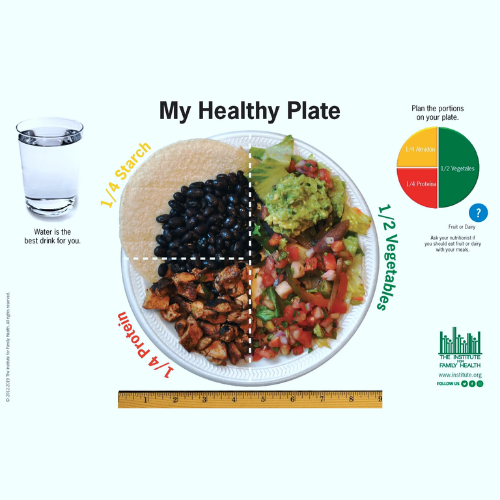Managing diabetes isn't about perfection but about progress; simple, realistic changes that help you feel your best. The YNHS nutrition services team meets with many people who feel overwhelmed when first thinking about their diagnosis--but it doesn't need to be. Here are six small actionable steps you can take today.
1. Make Your Plate Work for Your Life - Healthy eating doesn't have to be complicated when utilizing the Diabetes Plate Method:
- 1/2 Plate: vegetables you enjoy, frozen or canned will do.
- 1/4 Plate: Protein that fits your taste (chicken, beans, lentils, fish, tofu)
- 1/4 Plate: carbs you love, in the right portion (rice, tortillas, potatoes)
"You don't have to give up the foods you love--healthy eating isn't about avoiding food; it is about choosing foods in the right amount that nourish your body," says Katie Smith, Nutrition Services Director at YNHS.
2. Create Small Habits That Add Up - Pick one or two achievable habits:
- Add one serving of vegetables each day
- Replace one sugary drink with water, sparking water, or tea
- Eat meals around the same times each day to keep blood sugar steady
- Pair a carb with a protein (like a tortilla with eggs, or fruit with nuts)
3. Understand Carbs--Without Fear or Guilt - Carbs aren't "bad" they just affect blood sugar differently. Whole grains, beans, fruits, and dairy tend to have gentler impact than sugary drinks or pastries.
- Higher Impact Carbs: White rice, sugary drinks, pastries
- Lower Impact Carbs: Whole grains, beans, fruits, dairy
Olivia, Registered Dietician with YNHS reminds us that "Carbohydrates are fuel for our bodies. We need them for survival, so do not be afraid to eat or drink them, just learn how to balance them."
4. Use Mindful Eating to Stay in Control - Life is busy. Many people eat fast, eat while distracted or eat because the are stressed, which is all normal. Mindful eating helps you notice when you are full.
- Pause before eating - ask if you are hungry or stressed
- Slow down for the first five bites
- Notice flavors and be aware when you begin to get full
5. Move in Ways That Feel Good (Not Forced) - You don't need long workouts, short bursts of movement work too. Try things like:
- A ten-minute walk
- Stretching while watching TV
- Playing outside with kids or grandkids
- Marching in place during commercials
6. Get Support You Can Trust - Diabetes is easier to manage wit ha team behind you. Working with Dieticians and Certified Diabetes Care and Education Specialists means having someone who will:
- Help you set realistic goals
- Personalize recommendations to your culture and preferences
- Teach you skills like carb counting
Katie shares, "We know everyone's life looks a little different. Our goal is to not only provide education, but to work with patients on how to apply strategies that work for them in their daily lives to better manage and not be overwhelmed by living with Diabetes."
Learn more or schedule an appointment at ynhs.org.
This blog is a follow up to our earlier Diabetes Awareness Month blog all about everyday changes you can make that fit your life, your family, and your routine. Practical tools you can start using today.
